
Unemployment rate: 1.4 percent Standing on the shoulders of giants like Newton, Ramanujan and Lovelace, modern mathematicians analyze data and use statistical theories to help businesses and governments make decisions. The insights of mathematicians who conduct research in academic settings reveal new information about how the universe works. People in the field may have many different job titles, including systems or quantitative analyst, programmer or data scientist. Most people with this career have master’s or doctoral degrees. Demand for mathematicians is expected to grow 29.4 percent by 2026, adding 900 jobs. Learn more about mathematicians. (Thinkstock)

Unemployment rate: 1.4 percent Risk-averse? You may be a natural-born actuary. These business professionals use math and economics to help corporations predict and manage risks by designing tests, analyzing models and presenting their findings to company executives. Their work is essential to insurance corporations, which set their fees based on the probabilities that particular events will occur. Actuaries need bachelor’s degrees, typically in an analytical field like mathematics or actuarial science. The field is growing; demand is expected to increase by 22.5 percent by 2026, adding 5,300 jobs. Learn more about actuaries. (Thinkstock)

Unemployment rate: 1.8 percent Optometrists help the rest of us see the world more clearly. These eye experts test patients’ vision using charts and lenses. They prescribe corrective lenses, either for glasses or contacts. They also help identify more serious vision problems, like glaucoma, and other diseases that have eye-related symptoms, such as hypertension and diabetes. After graduating from college, optometrists spend four years earning doctor of optometry degrees, then state licenses. Some also complete a residency program. Demand for optometrists is expected to increase 17.3 percent by 2026, adding 7,000 jobs. Learn more about optometrists. (Getty Images/iStockphoto/kadmy)
Unemployment rate: 2.7 percent To prevent and decrease pain, nurse anesthetists administer anesthesia to patients undergoing surgery. During procedures, they monitor vital signs, like breathing, heart rate, blood pressure and body temperature, to ensure that patients remain safe. These health care professionals must have a year of clinical experience, typically working as registered nurses in critical care environments, before they apply to master’s programs in the field. Demand for nurse anesthetists is expected to grow 16 percent by 2026, adding 6,700 jobs. Learn more about nurse anesthetists.
Learn more about nursing programs. (AP Photo/Tony Dejak)

Unemployment rate: 0.8 percent Can’t catch your breath? You may need a respiratory therapist — a doctor who treats patients who have trouble breathing. These professionals care for people of all ages, including premature babies whose lungs haven’t developed and people suffering from diseases like asthma and emphysema. Some of their patients have chronic illnesses, while others are suffering from an emergency, like a heart attack or near-drowning. They use medications, ventilators and techniques such as chest physiotherapy, which helps drain mucus from the lungs. Respiratory therapists need at least an associate degree, plus a license to practice. Demand for respiratory therapists is expected to grow 23.4 percent by 2026, adding 30,400 jobs. Learn more about respiratory therapists. (Thinkstock)
Unemployment rate: 2.4 percent Helping someone regain the ability to walk or use her wrist or tie his shoes is the joy of working as a physical therapist assistant. These health care workers provide support to and carry out the plans of physical therapists. They observe patients, guide them through exercises and techniques and educate them about how to improve their mobility. This career requires an associate degree and a license. Demand for the job is expected to increase 31 percent by 2026, adding 27,200 jobs. Learn more about physical therapist assistants.
(AP Photo/Charles Rex Arbogast)

Unemployment rate: 2.8 percent Discerning where and among whom there will be demand for a company’s wares is what marketing managers do. They help set prices by balancing how much profit a business needs with how much customers are willing to pay. Most people with this job have bachelor’s degrees, having studied sales, communication, marketing, business law, economics and sometimes design and computer science. Demand for marketing managers is expected to increase 23 percent by 2026, adding 136,000 jobs. Learn more about marketing managers. (Thinkstock)
Unemployment rate: 1.2 percent Nurses are the worker bees of the hospital hive. They communicate with patients about their needs and concerns, keep records and pass information to doctors. They take tests and monitor vital signs. And they teach patients and their families how to continue proper medical care at home. Nursing specialties include care for people with cancer, substance addiction and heart disease, plus women delivering babies. Some nurses work in public health, offering screenings for diseases or vaccines for the flu. Registered nurses typically have either bachelor’s or associate degrees in the field, plus licenses. Demand for registered nurses is expected to increase 14.8 percent by 2026, adding 437,000 jobs. Learn more about registered nurses.
Learn more about nursing programs. (Thinkstock)

Unemployment rate: 0.5 percent Education is a big component of dental hygienists’ careers. These health care workers spend ample time teaching patients about how to achieve and maintain good oral health through proper brushing and flossing. They also do the bulk of the work during ordinary dental appointments. Hygienists listen to patient concerns, clean teeth, take X-rays and offer advice about the best products to use. To enter the field, dental hygienists need associate degrees. Demand for dental hygienists is expected to increase 19.6 percent by 2026, adding 40,900 jobs. This career is one of the 10 best jobs for millennials.
Learn more about dental hygienists.
(Thinkstock)

Unemployment rate: 0.4 percent Ever had that nightmare in which all your teeth fall out? It’s more likely that you’ll lose a single tooth than your entire smile, but no matter how many pearly whites you’re missing, a prosthodontist can help. These doctors of dentistry specialize in replacing missing teeth. They may use products like dentures, caps, bridges or crowns to fill in the gaps. Or they may turn to surgical techniques, like implanting a screw into the jawbone and adding a replacement tooth on top. Demand for prosthodontists is expected to rise 17.2 percent by 2026, adding 200 jobs. Learn more about prosthodontists.
(Thinkstock)

Unemployment rate: 1.8 percent Psychiatrists are mental health doctors. They diagnose and treat mental illnesses, like schizophrenia and bipolar disorder. They also help patients cope with conditions like anxiety and depression. There are many techniques in psychiatry. Some doctors rely most on behavioral therapy and personal counseling, while others take an approach that emphasizes medication. Psychiatrists must earn college and medical school degrees, then complete a residency. Demand for the profession is expected to grow 13.1 percent by 2026, adding 3,600 jobs. Learn more about psychiatrists.
Learn more about medical schools. (Thinkstock)

Unemployment rate: 0.5 percent Surgeons work under extremely high pressure. These doctors spend their days (and sometimes nights) hovering over patients on the operating table, treating diseases and illnesses through surgery. They have to solve problems quickly and need keen eyes and steady hands. Being able to sew a neat stitch helps, too. Surgical specialties include orthopedics, neurology and cardiovascular health. Some of these doctors work in plastic surgery, providing cosmetic or reconstructive services to patients. Surgeons must earn undergraduate and medical school degrees, then complete years of residency training. Demand for these doctors is expected to increase 16.8 percent by 2026, adding 7,600 jobs. Learn more about surgeons.
Learn more about medical schools. (Thinkstock)

Unemployment rate: 0.5 percent Precision is essential for the work that anesthesiologists do. These surgical team members administer the drugs that reduce patient pain during operations, and they’ve got to get the medication dose exactly right. While delivering anesthetics to people undergoing surgery and tooth extractions or giving birth to babies, anesthesiologists monitor vital signs like heart rate, blood pressure, breathing and body temperature. Anesthesiologists are doctors who have undergraduate and medical school degrees, plus years of residency experience and licenses to operate. Demand for these professionals is expected to increase 17.8 percent by 2026, adding 5,900 jobs. Learn more about anesthesiologists.
Learn more about medical schools.
(Thinkstock)

Unemployment rate: 0.7 percent When an Olympic athlete breaks her leg or your grandfather’s back aches for hours on end, both call on the expertise of physical therapists. These health care workers help people decrease physical pain and improve mobility. During the rehabilitation process, physical therapists assess patient needs and create plans for helping them regain strength and movement. They teach patients to perform stretches and exercises that will improve their conditions. These professionals must earn doctor of physical therapy degrees, which typically require three years, after completing college. Demand for the job is predicted to increase by 25 percent by 2026, adding 60,000 jobs. Learn more about physical therapists.
(Thinkstock)

Unemployment rate: 0.3 percent Whether because of a disability or injury, some people face extra physical challenges while navigating the world, struggling to fulfill their job responsibilities, use transportation, maintain their personal hygiene or have social interactions. Occupational therapists help these folks develop and maintain the skills they need for daily life. These professionals evaluate patients and work with them to create goals to better complete specific activities. They develop treatment plans that focus both on adapting the environment to better accommodate patients’ needs and helping patients adapt to their environments. They help people learn to use special equipment, like wheelchairs and braces. Occupational therapists need master’s degrees and licenses. Employment is expected to increase by 21.2 percent by 2026, adding 27,700 jobs. Learn more about occupational therapists. (Thinkstock)

Unemployment rate: 0.5 percent Is there a doctor in the house? Physician is a broad term for doctors of all kinds. Some work with families, providing annual checkups and advising on common conditions such as minor infections and injuries. Others are internists that specialize in specific organ systems, including the digestive tract, liver or kidneys. Cardiologists are experts in heart health, while dermatologists focus on the skin. Physicians prescribe medicine, order and interpret tests and provide advice. This career requires college and medical school degrees, plus completion of a residency program. Demand for physicians is expected to climb 16.9 percent by 2026, adding 8,400 jobs. Learn more about physicians.
Learn more about medical school programs in internal medicine.
Learn more about medical school programs in family medicine. (Thinkstock)

Unemployment rate: 0.5 percent If you’ve had your wisdom teeth removed, you’ve encountered an oral and maxillofacial surgeon. These doctors deal with medical situations more intense and complicated than dentists and orthodontists. They extract teeth from the gums, correct jaw defects, tackle oral cancers and perform surgeries on people with cleft lips or palates. They may also do cosmetic procedures related to teeth and the mouth. The job requires degrees from college and dental schools, plus completion of a surgical residency program. Demand for oral and maxillofacial surgeons is expected to increase 17.2 percent by 2026, adding 1,200 jobs. Learn more about oral and maxillofacial surgeons. (Thinkstock)

Unemployment rate: 0.5 percent Where do babies come from? Well, not exactly from obstetricians and gynecologists, but these doctors certainly help bring new life into the world. When women go into labor, obstetricians and gynecologists jump into action, preparing for and aiding with delivery. They also provide medical care to women, usually related to the reproductive system. Many women visit their OB-GYN doctors once a year for regular physical checkups, cancer screenings, birth control and tests related to sexually transmitted diseases. Obstetricians and gynecologists need undergraduate and medical school degrees, plus several years of residency training. The field is expected to add 3,900 more jobs by 2026, a 17.9 percent increase. Learn more about obstetricians and gynecologists.
Learn more about medical school programs in women’s health. (Thinkstock)
![Don't get flustered if everything doesn't go as planned because you or the doctor are delayed getting to the appointment.
"Health care is a little bit like a collage - it takes time to build great health care and a great health care relationship," Taylor observed. "So [if] you can't get it all done in one visit or in one day -- schedule the next visit and then keep building." (Thinkstock)](https://wtop.com/wp-content/uploads/2017/01/011117_doctor_8.jpg)
Unemployment rate: 0.5 percent Keeping kids healthy is a big responsibility that requires a patient temperament. Pediatricians are up to the challenge. These doctors care for infants, toddlers, children and teenagers as they grow up, handling health concerns including ear infections, strep throat, puberty challenges and minor injuries. They also administer the many vaccines kids require. Like other doctors, pediatricians have to get into and graduate from medical school, as well as complete a residency program. By 2026, pediatrician employment is expected to increase 17.8 percent, creating 5,300 new jobs for these doctors. Learn more about pediatricians.
Learn more about medical school programs in pediatrics. (Thinkstock)

Unemployment rate: 1.4 percent More than mere number-crunchers, statisticians help businesses and the federal government make sophisticated decisions about complicated problems. They collect data about real-world scenarios, then use theories, models and specialized software to predict outcomes. Statisticians often have master’s degrees plus college degrees in mathematics, economics or computer science. They may specialize in fields like engineering or physics. Demand for statisticians is expected to increase by 33.4 percent by 2026, adding 12,400 jobs. Learn more about statisticians.
(Thinkstock)

Unemployment rate: 0.4 percent People with misaligned bites or crooked smiles may procure the services of orthodontists. They specialize in using braces, retainers and other tools to shift teeth to where they belong. It takes a lot of education to become an orthodontist. After four years of college, they must complete dental school (another four years) and then a specialized orthodontist program (another three years). Then they need to earn a license from their state. But all that work pays off when it comes to orthdontists’ salaries, among the highest on this list. By 2026, experts predict a 17.3 percent increase in demand for orthodontists, or 1,100 new jobs. Learn more about orthodontists.
(Thinkstock)

Unemployment rate: 0.7 percent As advanced nurses, these professionals provide high levels of health care. In most states, they can perform many duties associated with doctors, including prescribing medicine, diagnosing disease, referring patients to specialists and requesting medical tests. They frequently serve specific sets of people, such as children, older adults or people with mental illness. Nurse practitioners must earn master’s degrees and licenses after completing college. Many work in doctors’ offices, while others labor in hospitals and outpatient centers. There is high demand for this role, and it’s expected to increase by 36 percent — or 56,000 jobs — by 2026. Learn more about nurse practitioners.
Learn more about nursing programs. (Thinkstock)

Unemployment rate: 0.7 percent Important players on a health care team, physician assistants work with doctors and nurses in family and emergency medicine, plus surgery and psychiatry. Their duties vary but may include examining patients and reviewing their medical histories, diagnosing disease and injury, ordering tests, making prescriptions and administering treatment. These professionals work in hospitals and doctors’ offices after completing specialized schooling, often in addition to their college coursework. Demand for physician assistants is expected to increase dramatically, by 37.4 percent by 2026, creating 39,700 new jobs. Learn more about physician assistants.
Learn more about physician assistant programs. (Thinkstock)
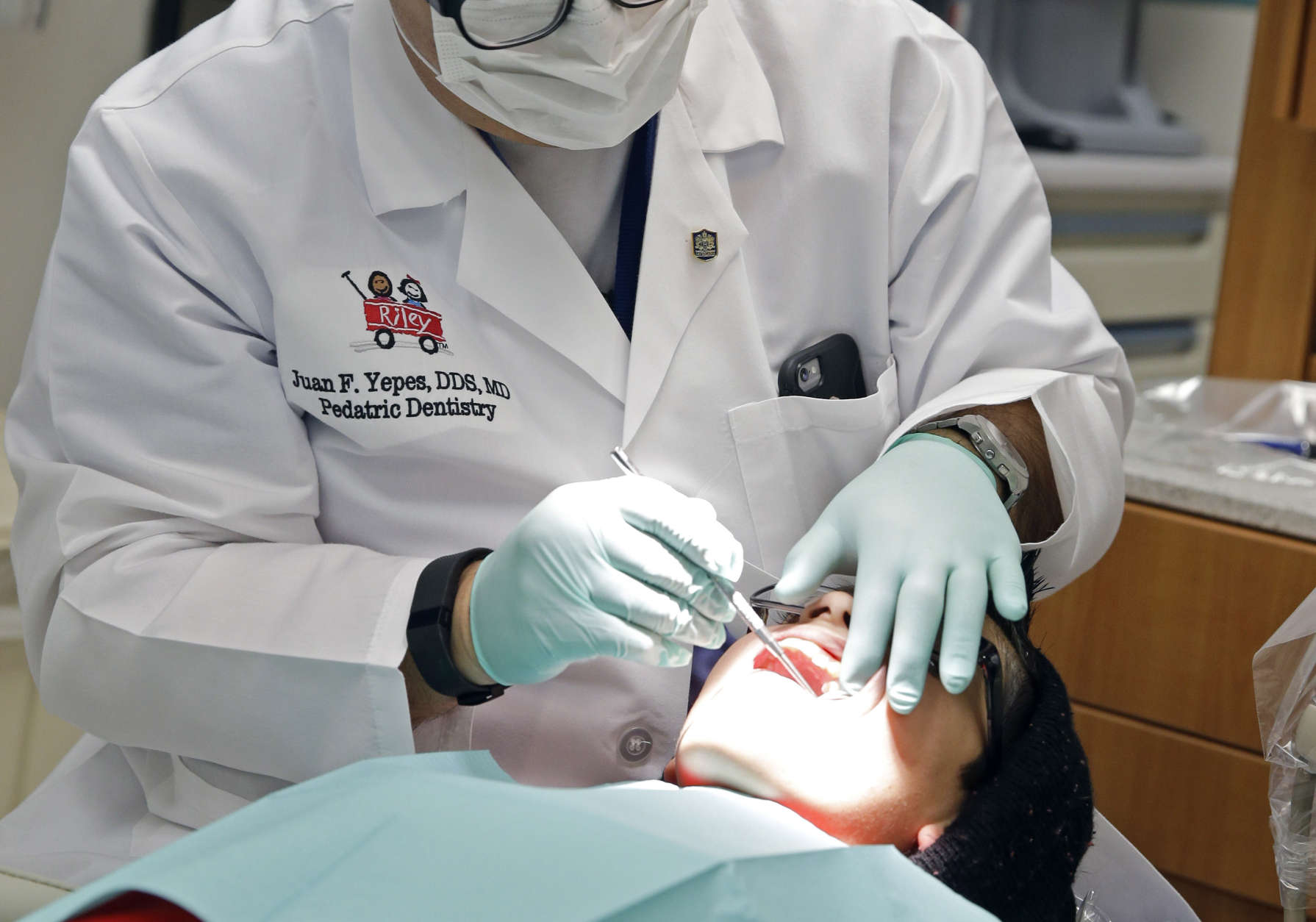
Unemployment rate: 0.4 percent Dentists are oral health care experts. They use X-rays, exams and tools like drills to diagnose and treat medical problems arising in the mouth, such as cavities and gum disease. These dental doctors attend specialized graduate programs after earning their college degrees. They may run their own practices or work in an office with other dentists. They work closely with dental hygienists, the No. 17 job on this list. By 2026, demand for dentists is expected to increase 17.5 percent, creating 23,200 new jobs. Learn more about dentists.
(AP Photo/Michael Conroy)

Unemployment rate: 1.6 percent These days, code is king. The importance of technology to our work and social lives has created high demand for software developers, pushing their career to the top of this list. Software developers create, maintain and fix applications and programs for smartphones and computers, paying attention to both function and form. Software developers typically have college degrees in computer science or a related discipline. Employment opportunities in the field are skyrocketing; they’re expected to increase by more than 30 percent by 2026. That means the creation of 253,400 jobs. This career is one of the 10 best jobs for millennials.
Learn more about software developers. (Thinkstock)


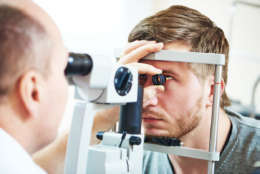
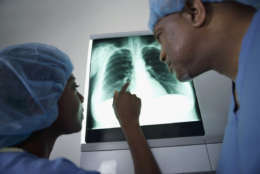

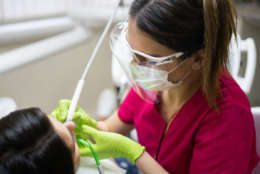
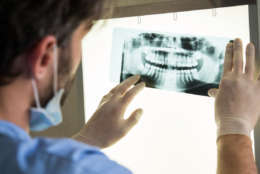








![Don't get flustered if everything doesn't go as planned because you or the doctor are delayed getting to the appointment.
"Health care is a little bit like a collage - it takes time to build great health care and a great health care relationship," Taylor observed. "So [if] you can't get it all done in one visit or in one day -- schedule the next visit and then keep building." (Thinkstock)](https://wtop.com/wp-content/uploads/2017/01/011117_doctor_8-260x174.jpg)




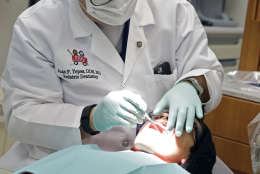

Top jobs
Thanks to high salaries and increased demand for their services, health care professions dominate the Best Jobs of 2018 list. But even though they account for 20 of the 25 top careers, no doctor or nurse position beat the best profession of the year: software developer. The ubiquity of digital technology has made these career coders critical to modern life.
Data for this list comes from the Bureau of Labor Statistics, an arm of the federal Department of Labor. The highest median salary the agency records is $208,000, so some of the following professions may actually offer median annual incomes higher than that amount. Click here for more information about the methodology behind the list.
Click through to see a countdown of the best careers and learn about each profession.
More from U.S. News
The 10 Worst Jobs for Millennials
The 25 Best Jobs of 2018 originally appeared on usnews.com





